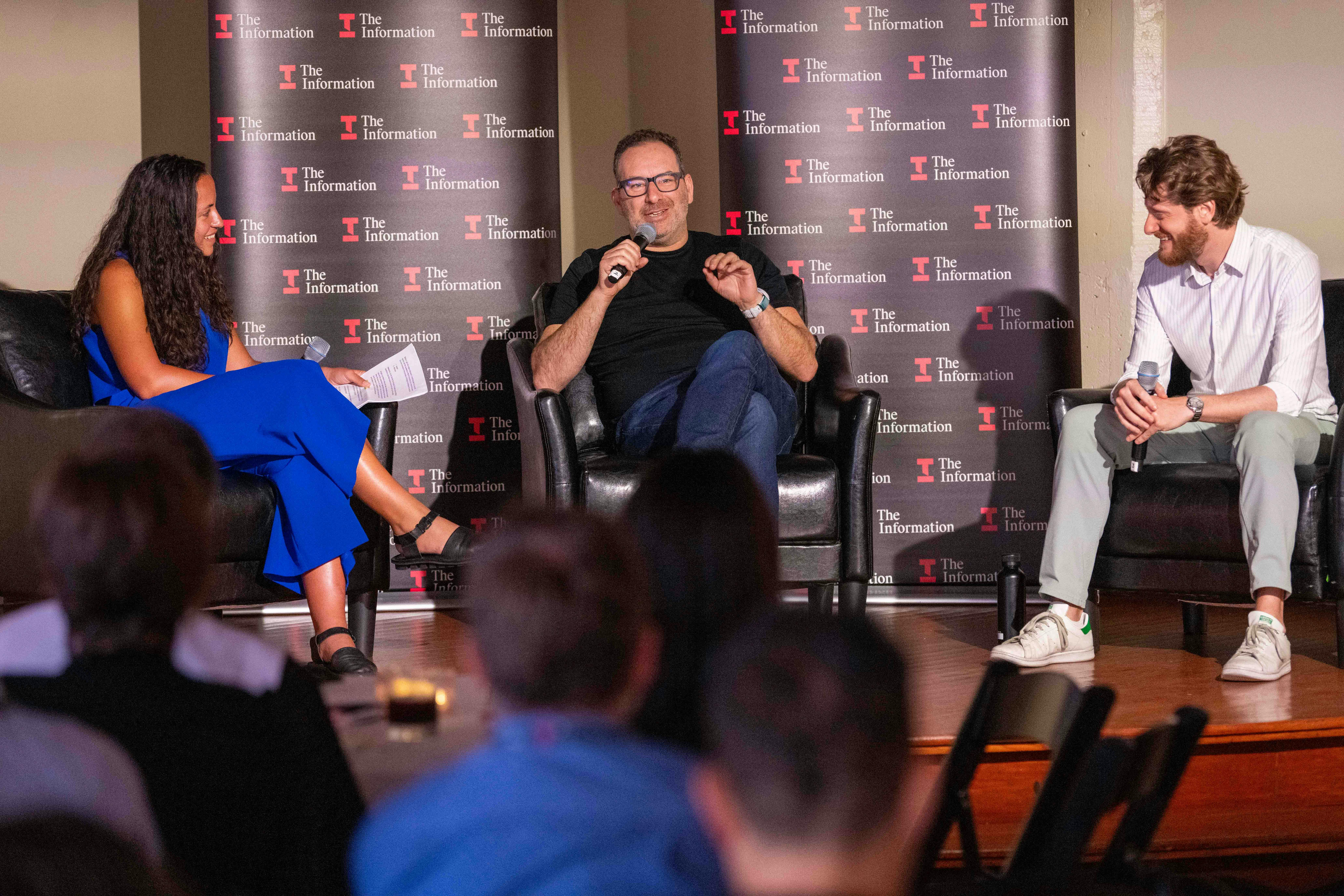AI Summit Recap: Moving Prototypes to Products

In the age of artificial intelligence, new AI-based apps and platforms are proliferating by the day. What consumers don’t see are all the hurdles a project must overcome to become market ready. As part of The Information’s SF AI Summit, and in partnership with Amazon Web Services, reporter Anissa Gardizy explored the question of what it really takes to go from prototype to products with two industry experts:
- Adam Seligman, vice president of developer experience, Amazon Web Services
- Michael Gerstenhaber, vice president of product, Anthropic
Common Hurdles of Bringing an AI Product to Production
Anissa Gardizy started off the discussion by asking about the top challenges companies face as they put AI products and features into production.
Michael Gerstenhaber said one issue he’s seeing is overcoming inconsistency. “One of the largest challenges is figuring out what good looks like, then constraining the prompts and the models to produce output that consistently looks good.”
For his part, Adam Seligman said sometimes companies don’t have the right engineering resources in place. “If an organization is not set up with processes, quality, measurement and operations, you’re unlikely to get lucky.” He then addressed the audience: “I hope you’re thinking about the strong engineering foundations you need to deliver successful features and innovation.”
Bringing Down the Price of Production
Another common hurdle is cost. Generative AI projects are generally heavy investments because the hardware they run on is incredibly expensive and often scarce. That’s why Amazon is producing its own silicon to bring the cost of production down. As Seligman explained, “We’re innovating high-capability silicon to make it cheaper and more efficient. And we offer silicon with different power capabilities at different price points, because customers have a variety of needs.” He went on to say, “It’s also about environmental responsibility. If we can help people use a smaller model, if we can help them use more power-efficient silicon, they can consume less power and emit less carbon.”
Helping Customers Over Production Hurdles
It’s in AWS’ and Anthropic’s interests that customers using their products be successful. So how do they help their customers achieve that success? The key is to bake help right into developer tools, offering the resources they need.
At Anthropic, Gerstenhager said, “We talk a lot about trust by default and trust by verification. So we have systems like constitutional AI that build safety into our models, as well as things like context window citations and other features that allow customers to protect themselves and their brands.” He added, “We have to provide them the tools they need, because it’s a very important part of developing a product for production.”
Seligman pointed to AWS Bedrock Guardrails, a feature that brings a consistent level of AI safety across customers’ apps. That’s only a part of how AWS helps developers. “We are a full-service vendor, so we try to equip our customers and startups, all the other things they need to be successful startups,” he said. “We have lots of credits for enterprises. We have a lot of technical resources. We do generative AI labs. So we’ve got a pretty exciting community.”
Cheering On the Future
Seligman was particularly excited about what’s next for generative AI. “I’m bullish on how fast the future’s going to come at us and the new things we could tackle fearlessly with these new tools.” Gerstenhager felt the future is about putting greater power in the hands of the consumer. “It’s fun seeing things play out in customer environments where they start by solving a problem and then realize that instead of helping a human solve the problem, they can just solve the problem for the human because they can predict what the problem is gonna be.”
As with any new technology, there will be bumps in the road that will smooth out in the future. Chips will become less expensive as more companies start manufacturing them. Better developer tools will be baked into platforms. AI itself will play a big part in shortening the prototype-to-product cycle. And in the end, more useful apps will land in the hands of AI-hungry consumers.